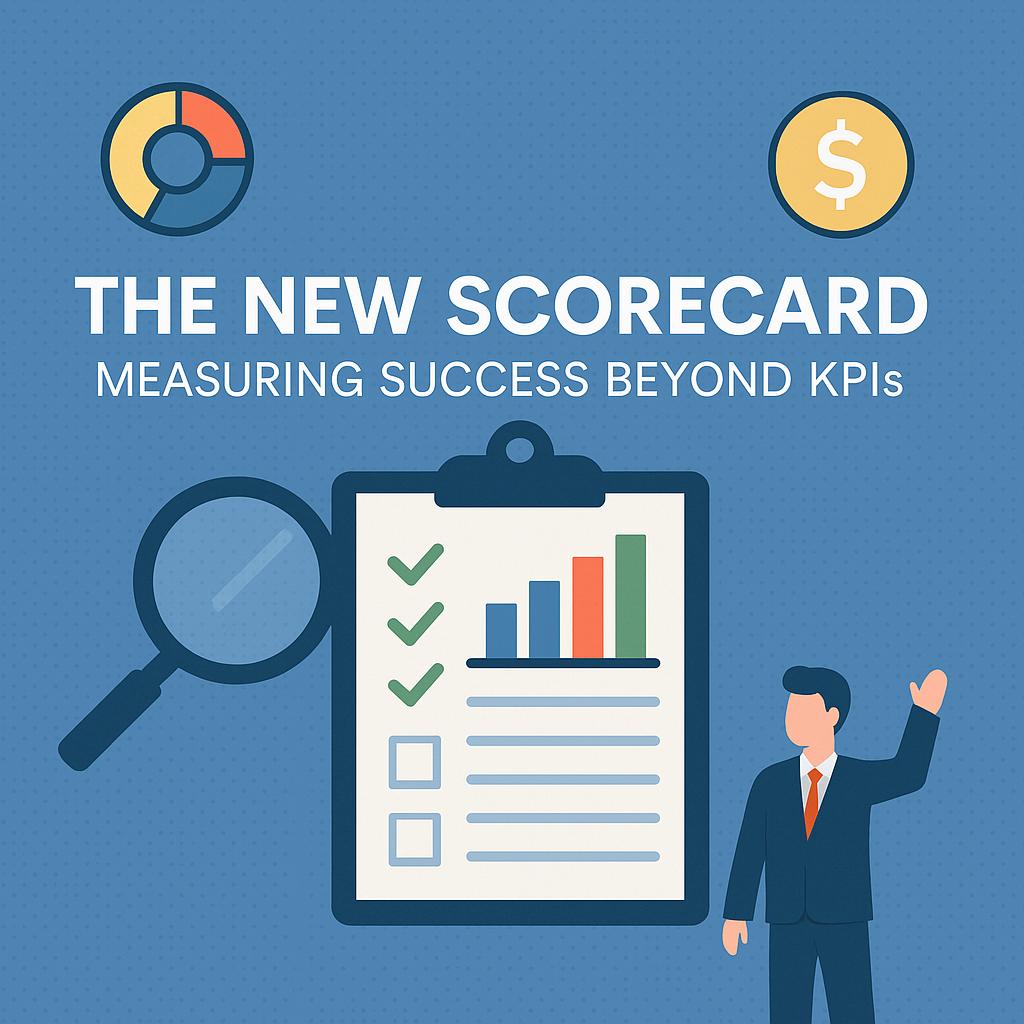The New Scorecard: Measuring Success Beyond KPIs
Tired of relying solely on traditional KPIs? In today’s rapidly evolving business world, organizations need new approaches to measuring success that go beyond conventional KPIs. The new scorecard measuring success beyond KPIs provides a complete view by integrating financial and non-financial metrics. Discover how this approach offers a balanced perspective on organizational performance.
Key Takeaways
- The Balanced Scorecard offers a comprehensive approach to performance measurement by integrating financial and non-financial metrics for long-term success and sustainability.
- Emphasizing strategic alignment and incorporating external factors, such as customer satisfaction and sustainability metrics, enhances decision-making and continuous improvement.
- Leveraging technology and fostering a culture of continuous improvement are critical for adapting performance measurement practices to evolving business landscapes.
If you’re ready to move beyond outdated KPIs and implement a proven scorecard framework tailored to your business, book a free 15-minute strategy call here: https://calendly.com/joelzimelstern1/15min
Beyond KPIs: The Evolution of Performance Measurement
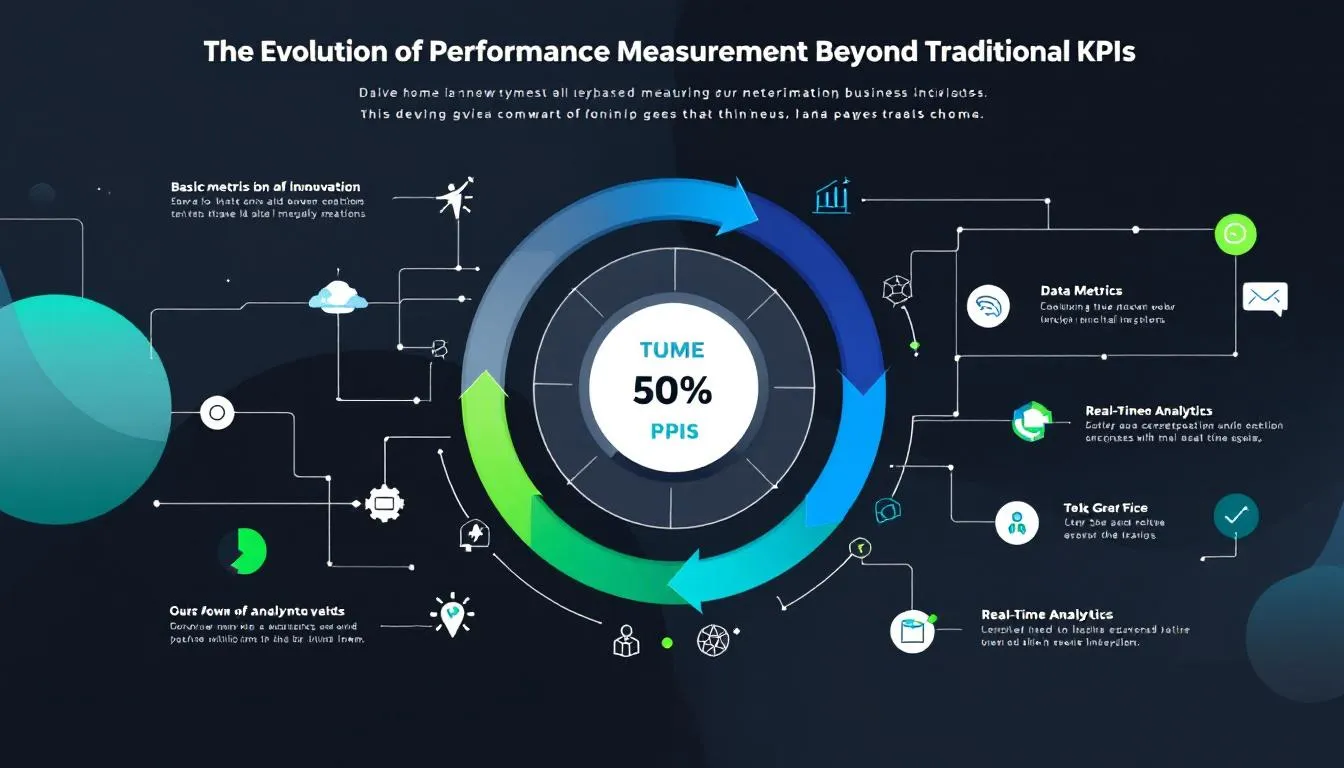
Key Performance Indicators (KPIs) have long been the standard for measuring organizational performance. These quantifiable metrics track progress towards strategic objectives and highlight areas for improvement. KPIs are specifically used to measure progress toward those objectives, ensuring that organizations can monitor and assess their advancement effectively. However, traditional KPI data often fall short of providing a complete picture of organizational health. They tend to focus narrowly on specific metrics, missing out on broader key performance indicator that are crucial for long-term success.
This is where the Balanced Scorecard comes into play, offering a comprehensive approach that integrates multiple dimensions of performance measurement, including non financial indicators. The Balanced Scorecard, developed by Harvard Business School professors, serves as a strategic tool that goes beyond financial measures to include customer satisfaction, internal processes, and learning and growth, as emphasized by the balanced scorecard institute.
This multi-faceted approach ensures that organizations can track performance in a balanced manner, aligning daily operations with long-term strategic goals. This approach helps organizations steer clear of the pitfalls of focusing solely on financial outcomes and promotes a more holistic view of success.
Limitations of Traditional KPIs
Traditional KPIs are essential for performance tracking, but they often come with limitations that hinder a comprehensive assessment of organizational effectiveness. These metrics are generally quantifiable and strategic, helping organizations focus on key priorities and align them with strategic goals. However, they predominantly focus on financial outcomes, offering a narrow view of success. This can lead to an incomplete understanding of overall performance, as many critical aspects like customer satisfaction and employee engagement are overlooked.
One significant limitation of traditional KPIs is their rigidity. They often track lagging indicators, which measure outcomes after they have occurred rather than providing real-time insights. This can result in delayed responses to emerging issues and missed opportunities for proactive improvements. Moreover, too many metrics can lead to information overload, diverting attention from the most critical performance indicators and wasting valuable resources.
The Balanced Scorecard addresses these limitations by incorporating a more flexible and adaptable measurement approach. It integrates both financial and non-financial measures, ensuring a balanced perspective on organizational performance. For instance, while traditional KPIs might focus on revenue growth and profit margins, the Balanced Scorecard also considers customer satisfaction, internal processes, and learning and growth metrics. This holistic approach provides a more accurate and comprehensive view of organizational health.
Transforming disconnected data into strategic performance insights helps organizations overcome the limitations of relying solely on traditional KPIs. The Balanced Scorecard provides valuable insights that support performance improvement by highlighting strengths and areas for development across all key business dimensions. The Balanced Scorecard ensures that all critical aspects of performance are measured and improved, enabling organizations to make informed decisions and drive continuous improvement.
Curious how your current KPIs stack up? Let’s review them together and identify gaps. Schedule your free call now: https://calendly.com/joelzimelstern1/15min.
Emerging Trends in Performance Measurement
As businesses navigate today’s complex environment, there’s a growing recognition that financial metrics alone cannot capture the full picture of performance. The Balanced Scorecard offers a holistic approach that includes both financial and non-financial measures, providing a multi-dimensional perspective on organizational success. This approach ensures that high-level strategic goals are aligned with daily operations, bridging the gap between strategy and execution.
One emerging trend in performance measurement is the integration of non-financial metrics, such as environmental and social governance factors. These metrics are becoming increasingly important as organizations strive to demonstrate their commitment to sustainability and social responsibility. Tracking these indicators allows businesses to maintain a balanced approach to performance measurement, ensuring long-term success and stakeholder satisfaction.
Additionally, the use of advanced performance management software is revolutionizing how organizations track and analyze performance data through performance monitoring. These tools enable real-time data collection and analysis, providing actionable insights that drive continuous improvement and innovation. As organizations adopt these technologies, they can better align their strategic objectives with operational activities, ensuring optimal performance and sustained success through a management system.
Don’t let your business fall behind. Align your strategy with today’s performance trends—book your 15-minute consultation today: https://calendly.com/joelzimelstern1/15min
The New Scorecard Framework
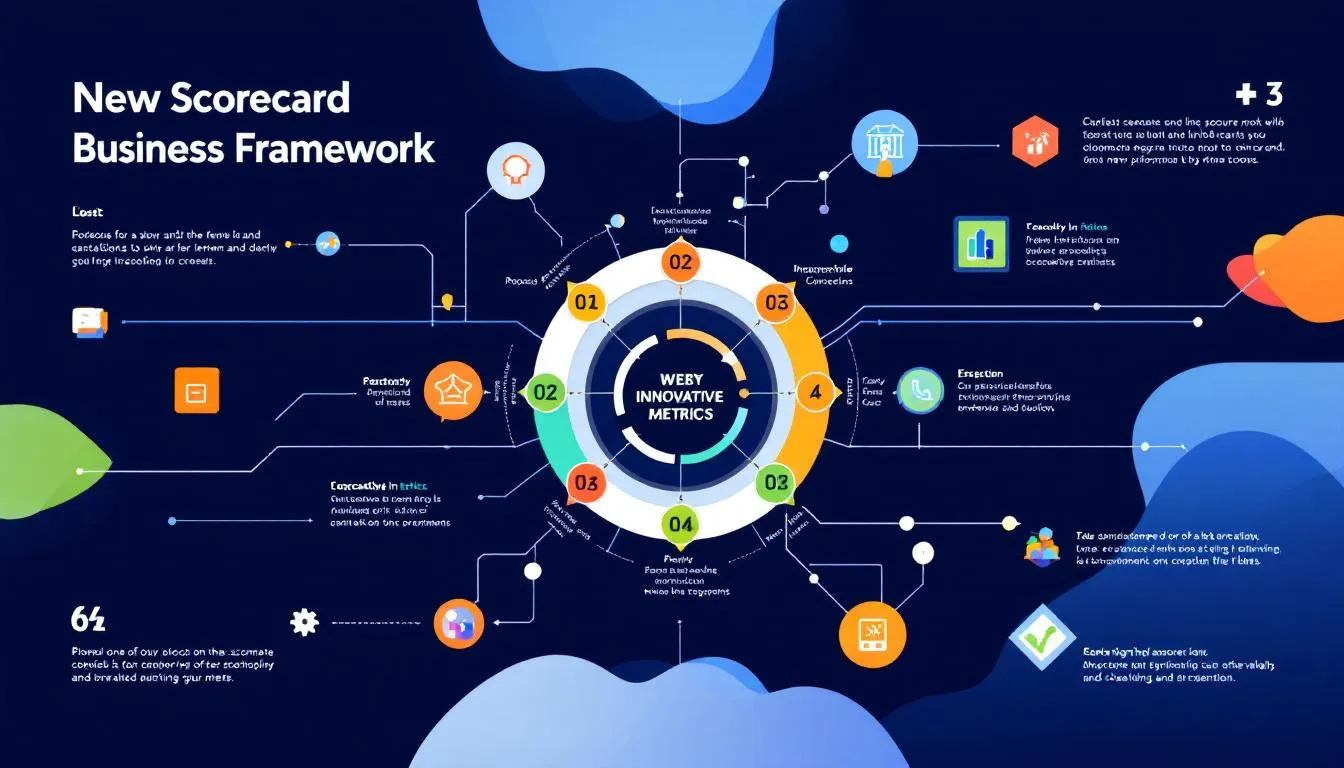
The Balanced Scorecard is not just a tool for tracking KPIs; it is a dynamic system designed to execute strategy and drive organizational performance. Balanced scorecards require adaptation and customization to fit different organizational strategies and industry contexts, ensuring they remain relevant as business landscapes and technologies evolve. Integrating financial and non-financial performance measures offers a comprehensive view of organizational health. This holistic understanding ensures that all critical areas of performance are effectively captured and improved.
Organizations that leverage the new scorecard framework report significant enhancements in strategic alignment and operational efficiency. The Balanced Scorecard assists in translating high-level strategic goals into operational objectives, ensuring that all activities are aligned with the organization’s mission and vision. This strategic alignment is crucial for driving long-term success and achieving optimal performance.
Integrating Financial and Non-Financial Measures
The integration of financial and non-financial measures is a cornerstone of the Balanced Scorecard framework. Relying solely on financial metrics can create a misleading depiction of organizational health and hinder long-term strategic alignment. Incorporating non-financial measures like customer satisfaction and employee engagement allows for a more comprehensive assessment of overall performance.
Tracking customer engagement and feedback is crucial for understanding the customer experience and pinpointing areas for development. Additionally, there is a rising trend towards incorporating environmental and social governance factors into performance evaluations. This balanced approach ensures that all critical aspects of organizational performance are effectively measured and improved.
A holistic view of performance measurement helps organizations unlock innovation opportunities and drive continuous improvement. Integrating financial and non-financial metrics provides a balanced perspective on success, ensuring sustainable, long-term growth.
Emphasizing Strategic Objectives and Initiatives
Aligning performance metrics with strategic objectives is essential for ensuring that daily operations support long-term goals. This alignment enhances decision-making processes, and by utilizing the Balanced Scorecard, organizations gain a holistic view of performance that supports strategic decision making. This enables organizations to focus on strategic initiatives that drive significant organizational impact. For example, Tech Innovators Inc. leveraged the new scorecard to enhance alignment between its strategic goals and day-to-day operations, leading to improved efficiency.
Streamlining processes and aligning operational goals with strategic objectives lead to measurable improvements in performance. The Balanced Scorecard provides a clear framework for translating high-level strategies into actionable objectives, ensuring that all activities are aligned with the organization’s mission and vision.
Incorporating External Factors
Incorporating external factors, such as market conditions and customer satisfaction, is vital for effective performance measurement in today’s complex business environment. Organizations are increasingly integrating sustainability metrics to evaluate long-term success and key stakeholders’ impact.
This comprehensive approach ensures that all dimensions of performance are considered, enabling organizations to adapt to changing market dynamics and achieve sustainable growth.
Wondering how to integrate financial and non-financial measures effectively? Let me show you. Book a time here: https://calendly.com/joelzimelstern1/15min
Key Components of the New Scorecard
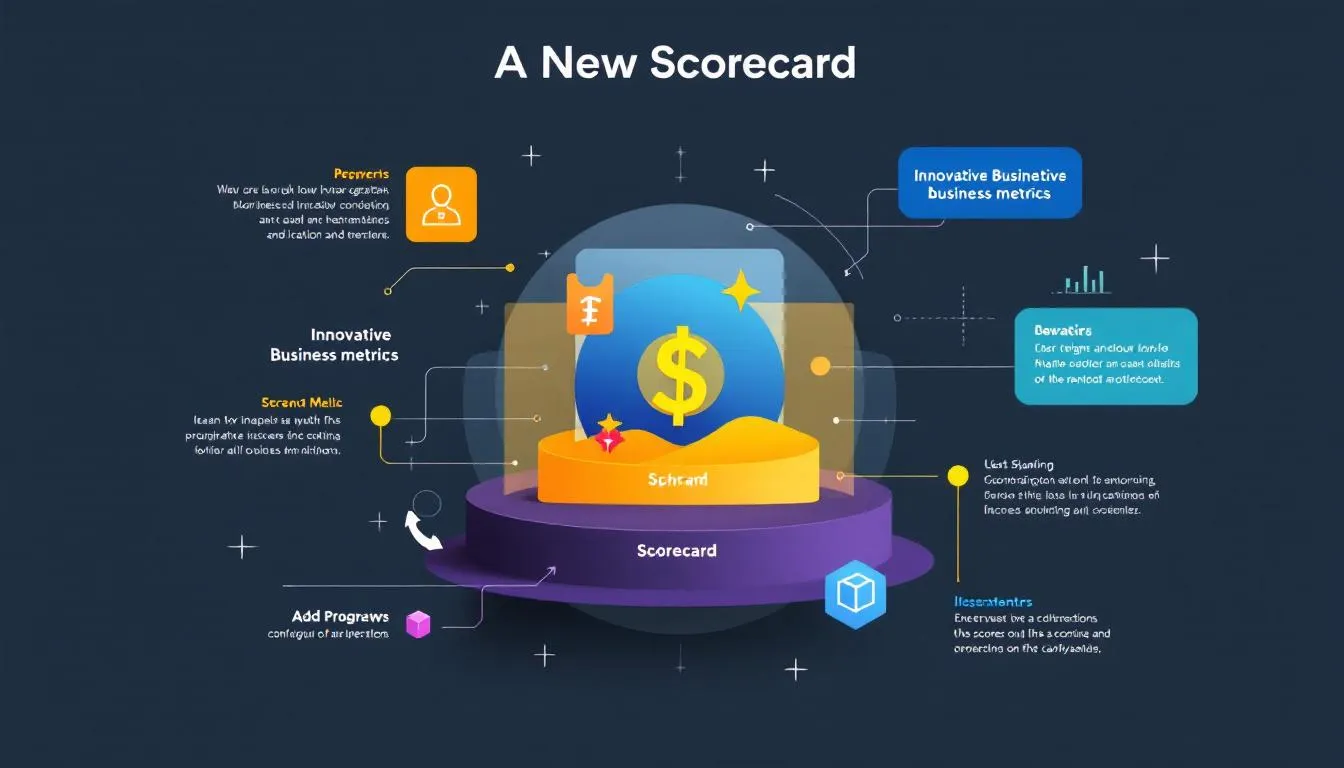
The Balanced Scorecard includes four key perspectives: financial, customer, internal processes, and learning & growth (also known as the growth perspective), which emphasizes long-term development, innovation, and continuous improvement in areas such as employee training, technology adoption, and organizational culture. These align with the balanced scorecard perspectives.
This multi-dimensional approach ensures that all critical areas of performance measurement are effectively captured, providing a holistic view of organizational health. By integrating these key perspectives, organizations can transform how they measure success, focusing on sustainable, long-term growth rather than short-term financial gains.
A balanced approach to performance measurement is essential for achieving strategic alignment and driving continuous improvement. By considering both financial and non-financial measures, organizations can ensure that all aspects of performance are effectively measured and improved.
Financial Perspective
The financial perspective of the Balanced Scorecard includes traditional metrics like profit margins and return on investment (ROI). These financial measures are crucial for assessing organizational success and ensuring financial stability. However, the financial perspective also emphasizes the need for innovation and continuous improvement alongside traditional financial metrics.
By focusing on both short-term financial performance and long-term strategic alignment, organizations can achieve a balanced approach to performance measurement. This holistic understanding ensures that all critical areas of performance are effectively captured and improved.
Customer Experience and Satisfaction
Measuring customer satisfaction, customer retention rate, and customer loyalty is critical to understanding success from the customer’s perspective. Key metrics for improving customer satisfaction include customer retention rates and the Net Promoter Score (NPS). By focusing on these indicators, organizations can ensure that they are meeting customer needs and driving continuous improvement.
HealthCare Solutions Ltd. adopted the new scorecard to systematically elevate patient satisfaction and service quality metrics, resulting in measurable enhancements. The organization implemented the Balanced Scorecard to systematically improve patient satisfaction and service quality through focused performance metrics. As a result, HealthCare Solutions Ltd. saw measurable improvements in patient feedback scores, demonstrating the effectiveness of the new scorecard approach.
By prioritizing customer experience and satisfaction, organizations can achieve sustained success and build strong, loyal customer relationships. This focus on customer-centric metrics ensures that all aspects of performance are effectively measured and improved.
Internal Processes and Operational Efficiency
Performance metrics for internal processes focus on enhancing production efficiency and minimizing error rates. Assessing and optimizing internal operations is crucial for achieving organizational efficiency and strategic alignment. By evaluating how effectively resources are allocated to meet customer demands, organizations can identify areas for improvement and drive continuous improvement. Machine learning algorithms can play a significant role in this process by identifying inefficiencies and optimizing resource consumption without impacting productivity.
The implementation of the Balanced Scorecard at Tech Innovators Inc. led to improved communication across departments and clearer performance metrics. This enhanced operational efficiency, allowing the organization to streamline its processes and achieve optimal performance.
Focusing on internal processes and operational efficiency ensures that all critical performance aspects are effectively measured and improved.
Employee Engagement and Development
Metrics like employee satisfaction and investment in R&D are essential for tracking engagement and development. Investing in people and systems is essential. This investment ensures adaptability and fosters innovation in an ever-changing business environment. To effectively measure employee engagement, organizations should track metrics such as employee satisfaction and adoption of new technologies.
A measurable target for employee training is to raise training completion rates. The goal is to achieve a completion rate of 90%. Prioritizing employee engagement and development fosters a high-performance culture that drives continuous improvement and innovation. This focus on employee-centric metrics ensures that all aspects of performance are effectively measured and improved.
Implementing the New Scorecard: Steps and Best Practices
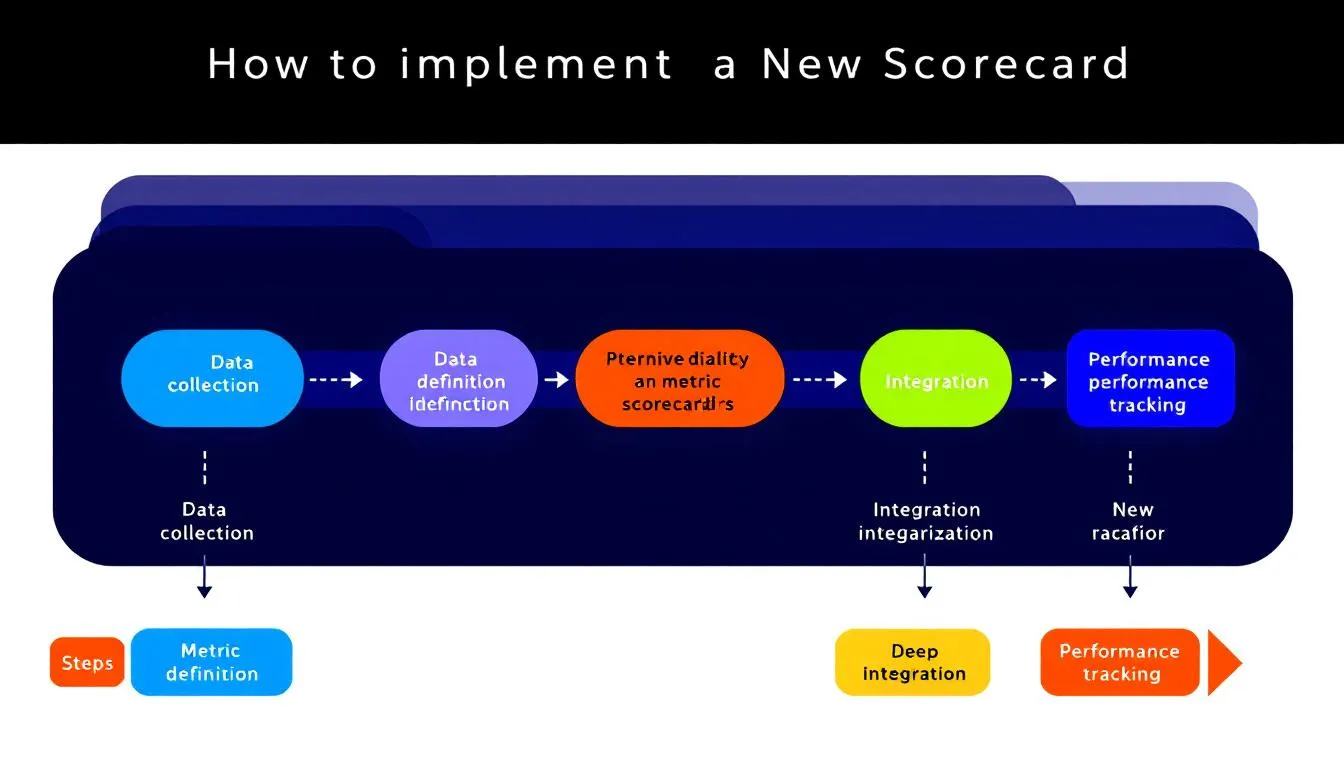
Implementing the Balanced Scorecard effectively involves translating an organization’s mission and vision into specific objectives and performance metrics. Cascading the Balanced Scorecard to different organizational levels ensures alignment and accountability, fostering a cohesive and results-oriented culture. However, common challenges include resistance to change and difficulties in aligning metrics to strategic goals.
To overcome these challenges, selecting performance management software like Spider Impact by Spider Strategies is vital. User-friendly performance measurement software fosters a data-driven culture and improves engagement across the organization. Following best practices and leveraging the right tools helps organizations successfully implement the Balanced Scorecard and achieve optimal performance.
Implementation doesn’t have to be overwhelming. If you’d like help tailoring a Balanced Scorecard for your business, set up your 15-minute call here: https://calendly.com/joelzimelstern1/15min.
Define Strategic Priorities and Objectives
Setting clear strategic priorities is essential for aligning with the organization’s vision and mission. Strategic initiatives are projects aimed at achieving strategic objectives with significant organizational impact. A strategy map is a visual representation of the relationships between strategic objectives and key performance indicators, providing insights to identify areas for improvement and ensure strategies are on track.
Defining strategic priorities and strategic objective ensures that all activities align with long-term goals and drive continuous improvement. This strategic alignment is crucial for achieving sustainable, long-term growth and success.
Select Relevant Metrics and Indicators
Selecting relevant KPIs in a Balanced Scorecard is crucial because:
- They must align with the organization’s strategic goals to measure success effectively.
- Effective metrics should provide quantifiable insights that directly relate to the defined strategic goals, enabling better decision-making.
- Utilizing Balanced Scorecard software can maximize effectiveness by automating data collection and aligning with strategic initiatives.
Real-time data visibility empowers organizations to make faster and more informed decisions, enhancing overall performance management. By defining clear targets and initiatives for KPIs, organizations can provide direction and motivation for teams, connecting daily work to organizational strategy. This ensures that all critical aspects of performance are effectively measured and improved.
Develop Strategy Maps and Action Plans
Strategy maps provide a visual representation of how different objectives are interconnected, facilitating a deeper understanding of strategic alignment. Cascading objectives from higher-level strategic goals to operational tasks ensures accountability and clarity throughout the organization. Action plans serve to outline specific responsibilities and steps necessary to achieve strategic objectives through strategy mapping and strategy execution.
Developing strategy maps and action plans ensures that all activities align with strategic goals and drive continuous improvement. This strategic alignment is crucial for achieving sustainable, long-term growth and success.
The Role of the Balanced Scorecard Institute
The Balanced Scorecard Institute (BSI) stands as a global leader in advancing the adoption and effective use of the Balanced Scorecard framework. Renowned for its expertise in strategic planning and performance measurement, the BSI equips organizations with the knowledge, tools, and best practices needed to successfully implement the Balanced Scorecard and achieve strategic alignment.
By partnering with the Balanced Scorecard Institute, organizations gain access to a wealth of resources designed to streamline the development of strategy maps, select the most impactful key performance indicators (KPIs), and ensure that performance measurement systems are closely tied to strategic objectives. The BSI’s guidance helps organizations overcome common challenges, such as identifying relevant KPIs and integrating them into a cohesive management system that supports continuous improvement.
The Institute’s emphasis on strategic management and alignment ensures that every aspect of the Balanced Scorecard—from initial design to ongoing refinement—supports the organization’s mission and long-term vision. Through workshops, certification programs, and consulting services, the BSI empowers organizations to embed continuous improvement into their culture, driving sustained success and measurable progress toward strategic goals.
Ultimately, leveraging the expertise of the Balanced Scorecard Institute enables organizations to transform their approach to performance measurement, ensuring that their Balanced Scorecard is not just a reporting tool, but a dynamic driver of strategic success.
Choosing the Right Software for Scorecard Implementation
Selecting the right software solution is a pivotal step in ensuring the successful implementation of the Balanced Scorecard. The ideal software should seamlessly align with your organization’s strategic objectives and support the tracking of key performance indicators (KPIs) that matter most to your business. Effective scorecard software enables organizations to map out their strategy, monitor performance in real time, and make data-driven decisions that propel strategic success.
When evaluating software options, it’s essential to look for features that facilitate strategy mapping, performance measurement, and continuous improvement. The software should offer robust performance monitoring capabilities, allowing you to track progress toward strategic goals, identify trends, and quickly address areas needing improvement. Compatibility with existing systems, such as CRM and ERP platforms, is also crucial for ensuring operational efficiency and eliminating data silos.
User-friendliness and scalability are key considerations, as they ensure that the solution can be adopted across the organization and grow with your business needs. By choosing a software platform that supports your strategic planning process and enables effective performance management, you empower your teams to drive continuous improvement and achieve business success.
Popular Balanced Scorecard software options like ClearPoint, Spider Impact, and Boardmix offer comprehensive features for strategy mapping, KPI tracking, and performance measurement. These tools help organizations streamline their management systems, enhance decision making, and maintain a clear focus on strategic priorities—ultimately supporting optimal performance and sustained growth.
Overcoming Challenges in Adopting the New Scorecard
Organizations often face cultural resistance when implementing the Balanced Scorecard due to existing performance measurement habits. This resistance can manifest as pushback, skepticism, and reluctance among employees. To overcome these challenges, it is essential to foster a sense of ownership and engage employees early in the process.
Leadership commitment is vital for the success of the Balanced Scorecard initiative. Without it, achieving the desired outcomes may be challenging. Leaders should actively participate in implementation, regularly review progress, and hold teams accountable. Continuous review and adjustment of the Balanced Scorecard are necessary to identify trends, adjust strategies, and maintain competitive advantage.
Facing resistance or uncertainty with your team? Let’s talk about how to lead the change effectively. Book your strategy session: https://calendly.com/joelzimelstern1/15min.
Managing Resistance to Change
Common reactions of employees to changes introduced by the Balanced Scorecard include pushback, skepticism, and reluctance. A key strategy to address resistance is fostering a sense of ownership among employees. Open dialogue during the implementation process addresses concerns and creates a safe space for feedback. Engaging employees early in the process can help reduce resistance and foster ownership.
Effectively managing resistance to change ensures a smoother implementation process and drives continuous improvement. This cultural shift is crucial for achieving sustainable, long-term growth and success.
Ensuring Leadership Commitment
Leadership commitment is essential for the success of the Balanced Scorecard initiative and for ensuring alignment across the organization. Leaders should actively participate in implementation, regularly review progress, and hold teams accountable to foster effective utilization of the Balanced Scorecard.
Ensuring leadership effectiveness helps achieve strategic alignment and drives continuous improvement. This strategic success is crucial for achieving sustainable, long-term growth and success.
Continuous Review and Adjustment
The Balanced Scorecard should be viewed as an evolving document that requires regular updates to remain effective. Regular updates help identify trends and adjust strategies as businesses change, ensuring that the Balanced Scorecard reflects new realities and maintains its relevance.
Encouraging a mindset of continuous improvement within an organization contributes to adaptability and long-term success. Continuously reviewing and adjusting the Balanced Scorecard ensures that all critical performance aspects are effectively measured and improved.
Maximizing the Impact of the New Scorecard
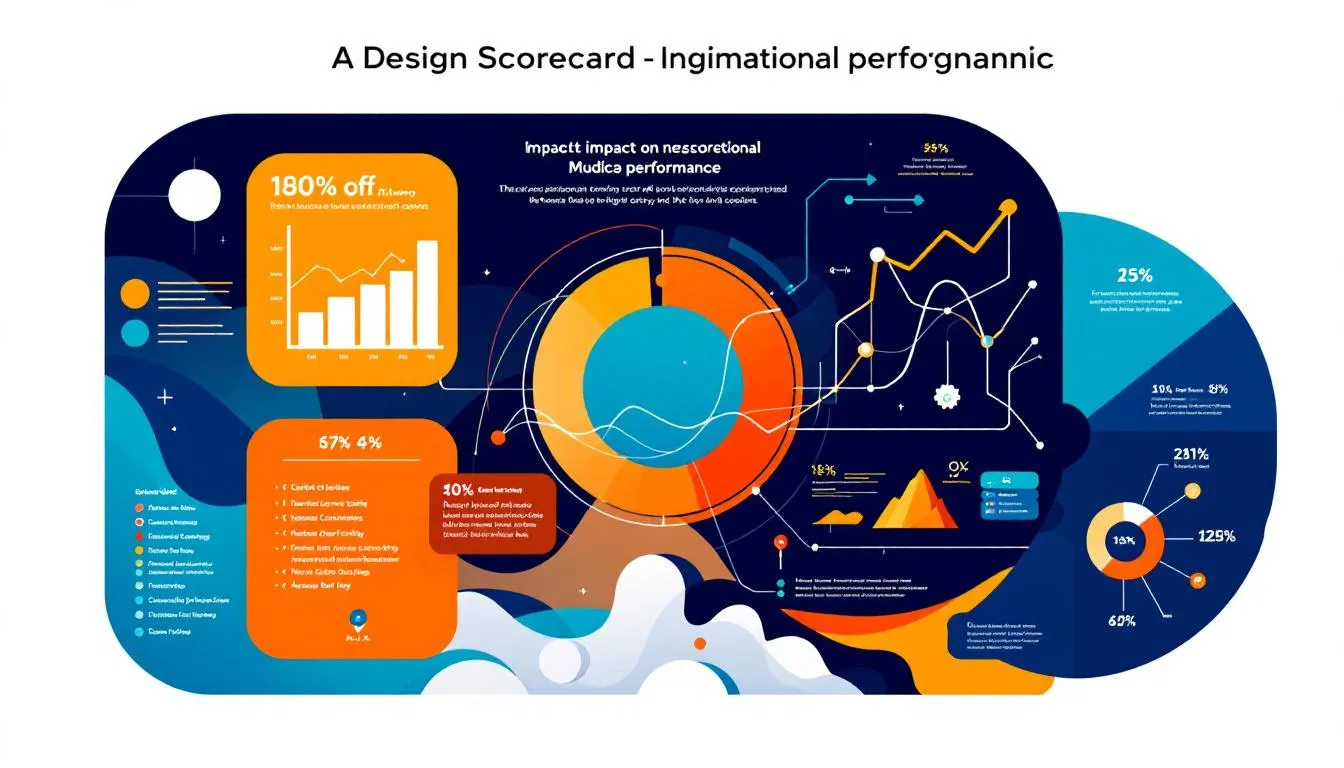
Proactively addressing issues is important. It helps maintain the highest value when measuring performance. The Balanced Scorecard provides a holistic view of performance for informed decision-making. By identifying trends and potential roadblocks, organizations can drive continuous improvement and innovation.
Leveraging advanced technologies, such as AI and machine learning, can enhance performance measurement systems. The integration of AI is expected to enhance energy efficiency by optimizing energy consumption patterns in real-time. Focusing on continuous improvement and innovation enables organizations to achieve sustained success and drive long-term growth.
Leveraging Technology and Data Analytics
Integrating technology with the Balanced Scorecard allows for efficient tracking and analysis of performance data, streamlining decision-making. Balanced Scorecard software should integrate with critical systems such as CRM and ERP to ensure smooth operation and eliminate manual data entry. Compatibility in Balanced Scorecard software is crucial as it ensures integration with existing systems and prevents redundant data entry tasks.
A streamlined data approach provides significant advantages, including time savings and a reduction in human error. Seamless data flow between systems reduces errors and ensures that information remains current and accurate. Leveraging technology and measurable data analytics allows for a balanced approach to performance measurement and drives continuous improvement.
Fostering a Culture of Continuous Improvement
Tracking employee engagement is crucial for fostering a culture of continuous improvement and innovation. Engagement metrics help organizations understand employee commitment, which is essential for fostering a high-performance culture. Organizations can foster a culture of change management by addressing resistance to change and ensuring alignment with strategic objectives.
Fostering a culture of continuous improvement drives sustained success and achieves long-term future growth. This cultural shift is crucial for achieving sustainable, long-term growth and success.
Case Studies: Success Stories with the New Scorecard
Real-world case studies demonstrate the successfully implemented new scorecard, providing concrete evidence of its effectiveness in driving performance improvements. These success stories highlight the significant measurable improvements achieved by organizations that have adopted the Balanced Scorecard.
Case Study 1: Tech Innovators Inc.
Tech Innovators Inc. faced challenges in aligning its performance measurement with changing strategic goals, leading to an exploration of new frameworks. By implementing the new scorecard, Tech Innovators Inc. was able to align its performance indicators directly with its strategic initiatives, ensuring that all departments worked towards common objectives.
The new scorecard also enhanced operational efficiency by providing clear and measurable benchmarks, allowing Tech Innovators Inc. to monitor progress, identify bottlenecks in their processes, optimize workflows, and achieve cost savings.
Overall, Tech Innovators Inc. experienced significant improvements in both strategic alignment and operational efficiency, aiding in their growth and adaptability in a rapidly changing market.
Case Study 2: HealthCare Solutions Ltd.
HealthCare Solutions Ltd. faced challenges in measuring its success in improving patient care and service quality. The organization implemented a new scorecard framework to measure both financial and non-financial metrics, ensuring a balanced view of its performance.
By leveraging the new scorecard, HealthCare Solutions Ltd. was able to enhance patient satisfaction metrics significantly, resulting in improved healthcare service delivery. The introduction of the new scorecard led to measurable improvements in patient satisfaction and service quality, aligning organizational objectives with patient needs.
Inspired by these success stories? Let’s create yours. Reserve your 15-minute call today: https://calendly.com/joelzimelstern1/15min.
Future Trends in Performance Measurement
Emerging technologies, like AI, are expected to transform performance measurement approaches significantly. The integration of AI and machine learning in performance measurement systems is expected to significantly increase, enhancing data analysis and providing real-time insights. Organizations must adapt to evolving business landscapes and technology advancements to keep their scorecards relevant.
The integration of emerging technologies and the adaptation of performance measurement practices will be critical trends shaping the future of business success. By embracing these trends, organizations can achieve sustained success and drive long-term growth.
AI and Machine Learning in Performance Measurement
AI-driven predictive analytics will allow organizations to forecast trends and identify potential risks and opportunities, fostering proactive decision-making. AI can analyze vast data sets to uncover patterns and trends that inform better data driven decisions in performance metrics.
Incorporating AI-driven insights helps anticipate future trends and suggests proactive adjustments in performance measurement. Artificial intelligence and machine learning are transforming performance measurement through enhanced predictive capabilities, enabling organizations to achieve optimal performance and drive continuous improvement.
Sustainability and Social Responsibility Metrics
Sustainability metrics are increasingly recognized as essential indicators of an organization’s long-term viability and contribution to environmental stewardship. Social responsibility metrics evaluate an organization’s ethical impact and its relations with communities, employees, and stakeholders.
Integrating sustainability and social responsibility metrics into performance measurement allows organizations to achieve comprehensive insights that align with strategic objectives. Utilizing these metrics can lead to enhanced brand loyalty, improved stakeholder relationships, and overall organizational success.
Summary
The Balanced Scorecard offers a comprehensive and holistic approach to performance measurement, going beyond traditional KPIs to include financial and non-financial metrics. By integrating customer satisfaction, internal processes, and learning and growth perspectives, organizations can achieve strategic alignment and drive continuous improvement.
Embracing the Balanced Scorecard framework enables organizations to navigate the complexities of today’s business environment and achieve sustainable, long-term growth. By leveraging advanced technologies and fostering a culture of continuous improvement, businesses can unlock their full potential and drive strategic success. Ready to transform your performance measurement approach? The Balanced Scorecard is your key to unlocking long-term success.
Ready to unlock long-term growth with a smarter performance framework? Let’s get started—book your free 15-minute call with me now: https://calendly.com/joelzimelstern1/15min
Frequently Asked Questions
What is the Balanced Scorecard?
The Balanced Scorecard is a powerful tool that combines financial and non-financial metrics to give you a complete picture of your organization’s performance and strategy. Embrace this framework to drive alignment and achieve your goals!
How does the Balanced Scorecard differ from traditional KPIs?
The Balanced Scorecard goes beyond traditional KPIs by incorporating perspectives like customer satisfaction and internal processes, providing a holistic view of performance. Embrace this approach to truly enhance your organization’s strategic vision!
What are the key components of the Balanced Scorecard?
The key components of the Balanced Scorecard are financial, customer, internal processes, and learning & growth perspectives. By integrating these areas, you can achieve a comprehensive view of performance that drives success!
How can organizations overcome resistance to change when implementing the Balanced Scorecard?
To overcome resistance to change when implementing the Balanced Scorecard, organizations should foster a sense of ownership by engaging employees early and maintaining open dialogue for feedback. This approach not only eases the transition but empowers your team to embrace the change wholeheartedly!
What role does technology play in enhancing the Balanced Scorecard framework?
Technology significantly enhances the Balanced Scorecard framework by enabling efficient tracking and real-time analysis of performance data. This empowers you to make informed decisions that drive continuous improvement and foster innovation.
